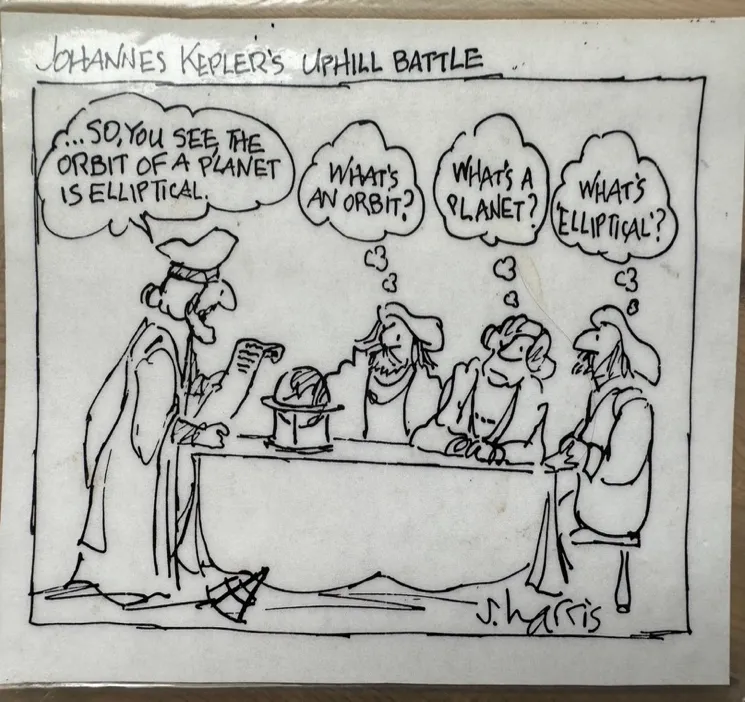Talking to Stones
By Jim Selman with Shae Hadden
Communicating a possibility you see is often an uphill battle. Not because you can’t explain yourself well, but because of the universally dangerous condition Jim calls “cognitive blindness”.

Have you ever attempted to communicate something you are crystal clear about to someone who just doesn’t get it and who argues with everything you offer in the way of explanation and facts? There is never enough evidence or information to gain acceptance of what you are saying. There is simply no opening in their listening to ‘see’ what you ‘see’. If you persist, they not only ‘tune you out’, but may also expel you from their community to avoid conversation with you altogether.
It is as if we are “talking to stones”.
In conversation with a very good friend and client today, we landed on this as a kind of universal problem of communication that often happens in large organizations or other situations where your identity is at stake. You have an idea or see a possibility that others can’t see. You know (or believe you know) something that others don’t know—and they don’t know that they don’t know. Yet, like Galileo, you may end up being the one forced to face the consequences of challenging a prevailing worldview.
When the Italian astronomer observed an anomaly in the movement of Mars, he had the insight that the world revolves around the Sun. He talked to people who were certain that the Sun revolved around the earth: “It’s obvious.” Galileo was a respected scientist and member in good standing with the clerical powers of the day, but once he declared his ‘discovery’, he was judged to be an outsider by those in power, a heretic, someone who had “lost his marbles”. Obviously, this can be frustrating. Sometimes it can lead to becoming resigned, giving up on yourself and what you know to be so. Not so in Galileo’s case. Although he was tried by the Inquisition and forced to live under house arrest for the remainder of his life, he continued to write and publish.
The fact is all of us are ‘blind’ to all sorts of phenomenon we don’t think about or even notice. If presented with an argument that argues with the way we ‘know’ it really is, we will typically ‘deny’ whatever the proposition might be.
I call this condition “cognitive blindness”.
Cognitive blindness is not a psychological defect. Nor is it a lack of intellect or intelligence. It is not an intentional deflection of the argument. Nor is it a failing on the part of the communicator to provide evidence or information to adequately explain.
Cognitive blindness exists because we understand and interpret the world within a context. That context consists of whatever allows us to make sense of the world: what we already know, our beliefs and experiences, and any relevant historical references.
In today’s rapidly changing and emerging reality, cognitive blindness can be a dangerous condition. For example, let’s say you are the only person in your community to see the imminent danger from forest fires related to climate change. If you are able to enrol people in your perspective, you will be able to mobilize homeowners to clear away excess underbrush and take other precautionary measures. If not, your whole community could be destroyed.
It is incumbent on each of us to recognize that we’re always ‘cognitively blind’ and to develop practices for confronting our blindness. Just as a car’s rear-view mirror allows us to drive with relative safety even though we have blind spots, there are several tools we can use to navigate in a changing world with cognitive blindness.
The most important, of course, is to recognize and remember the blindness. If you are physically blind, it creates many challenges. Denying you are blind is a formula for disaster.
The second is to consider the possibility that what the other person is saying might be true. I often ask my students, “If you were in denial, how would you know you were in denial?” The obvious answer is you wouldn’t—unless you could stand in the shoes of the other person and consider two possibilities. Their view may be accurate. It could also afford you more choices than the one you currently hold.
Finally, practice the art of inquiry. Don’t listen like a “stone”. Don’t listen to answer questions like “Do I agree—or not?Is the proposition right or wrong, true or false?” Listen instead to answer questions like “What is the other person observing or ‘seeing’ that I am not? What’s missing that I am not getting?” Inquiring in this way keeps you open to the possibility that you are blind and can enable you to listen generously to anything the other person has to say. And it will allow you to have more of those ‘ah ha’ moments that happen when you realize something you didn’t know you didn’t know.
You may still talk with stones. But if you invite others to listen in this manner, you may find there are a lot fewer stones than you think.
© 2024 Jim Selman